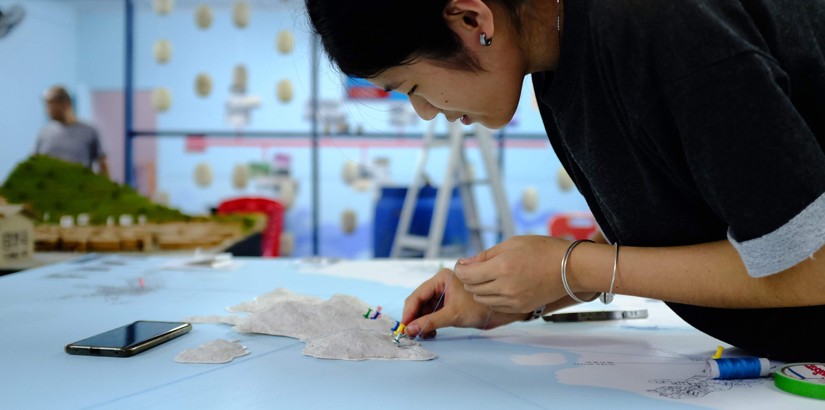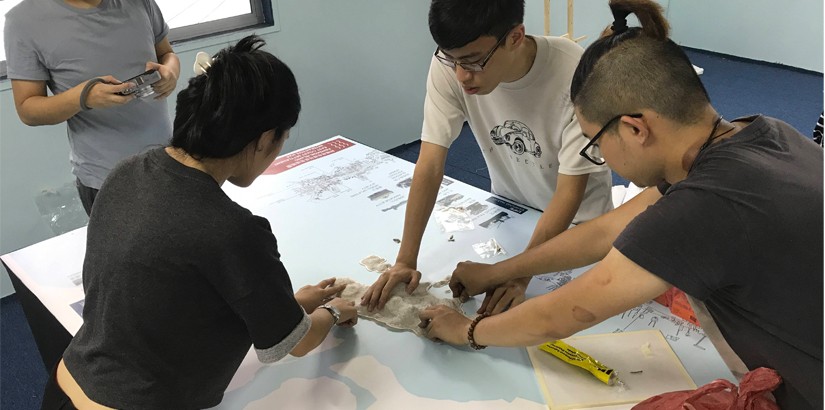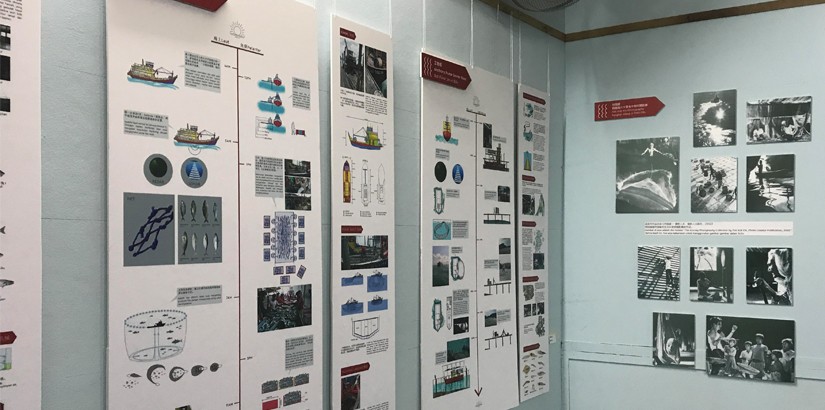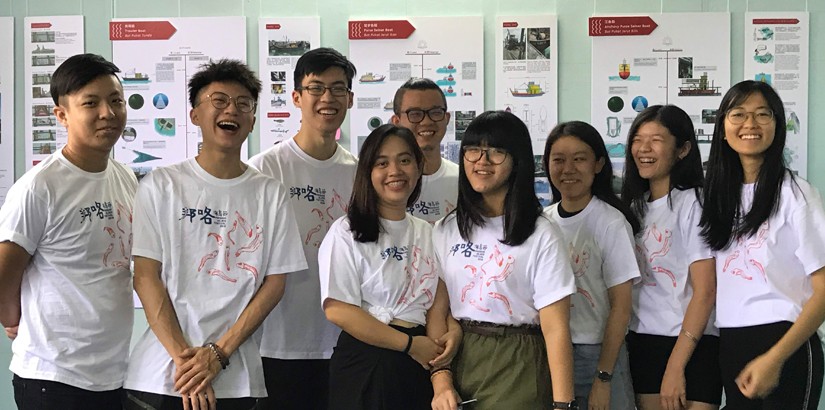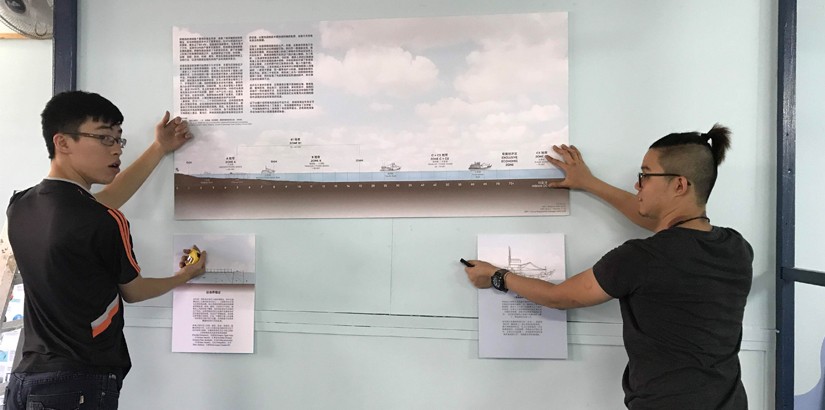2019
13 SepUCSI Architecture Students Contribute Creatively While Connecting With Community
In architecture, everything has structure and meaning. A design may represent someone, something or even some place. It is the task of the architect not just to envision and design but also to connect with the community in giving meaning to their designs.
UCSI University’s Interior Architecture students had this very opportunity; to understand and connect with the fishing community in Pangkor Island. They took fishing huts as sites to investigate the ‘mechanism’ where things (object, activity, space, etc.) form a system of living. Additionally, they worked together with the local fishing community during the process of data collection.
In their design studio project which they presented in the Pangkor Story House exhibition, they documented the main types of fisheries, how they operate from on shore to off shore, fishing huts and/or on vessels and how things (tools, equipment, space, fish or food, etc.) come together to form a system of living for the fishery industry.
The exhibition was open to the public in conjunction with the Pangkor Island Festival 2019 from 13 to 15 September, 2019. The Pangkor Island Festival was organised by Oriental Art and Cultural Center (OACC).
The studio project attempted to address the common question of “how to design” by asking students to draw relationships between architecture and other elements, that is through object arrangement in space.
There were seven students from IA semester 3 (previously in Semester 2) and four students from IA semester 5 (volunteering) who were involved in the final stage of production of graphical information, setting up the exhibition and interacting with the community during the Pangkor Island Festival.
Essentially, this was a school assignment that incorporated the idea of a public interest project. It also provided a methodology of studio teaching that engaged with real issues of the environment and the community.
This project provided a platform for students who study design in cities, to rethink the theory of spatial design not only in urban areas, but also in a rural context, in this case, the fishing community in Pangkor Island.
During a field trip earlier on this year, students learnt how to trace intangible information such as lifestyles, traditional wisdom, environmental climate, etc. with limited resources. Secondly, they learnt to appreciate that intangible information with new perspective of ecology development and thirdly, to synthesis this information or learnt theory into their future design processes.
During the Pangkor Story House exhibition, students learnt the process of developing ideas, interior design and execution of an exhibition space as well as working in team (seniors and juniors) for clear objectives with tight deadlines.
It was an opportunity for the 11 students to get real experience in understanding the entire process of exhibition design from content to interior space. Students also connected with the community and gained feedback from them to examine the authenticity of information of their school assignment, that was conducive to individual interpretation and the search of meaning in learning paths and creative pursuits.



